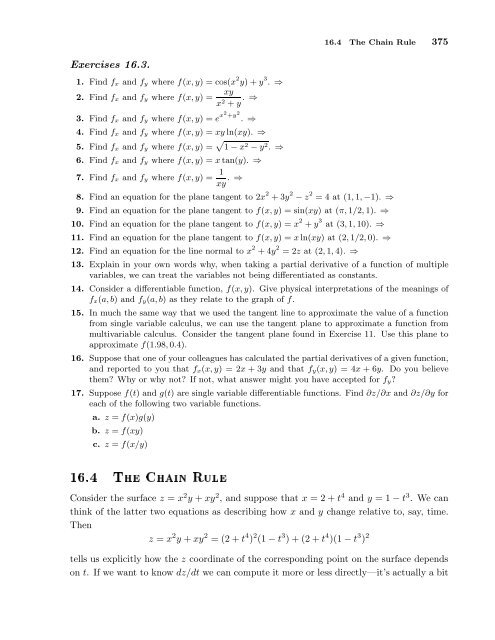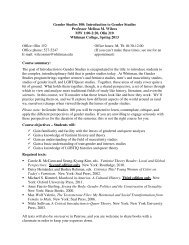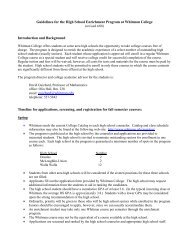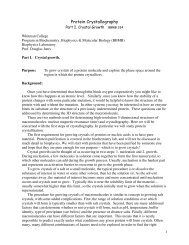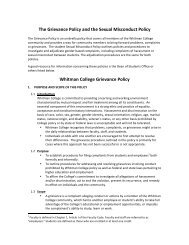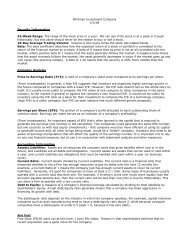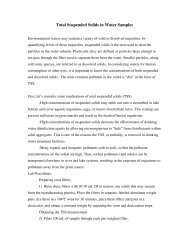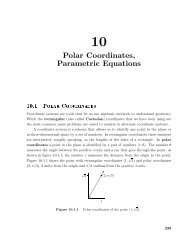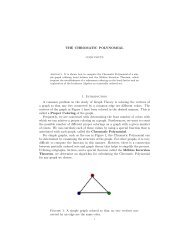Chapter 16 Partial Differentiation
Chapter 16 Partial Differentiation
Chapter 16 Partial Differentiation
Create successful ePaper yourself
Turn your PDF publications into a flip-book with our unique Google optimized e-Paper software.
<strong>16</strong>.4 The Chain Rule 375Exercises <strong>16</strong>.3.1. Find f x and f y where f(x,y) = cos(x 2 y)+y 3 . ⇒2. Find f x and f y where f(x,y) = xyx 2 +y . ⇒3. Find f x and f y where f(x,y) = e x2 +y 2 . ⇒4. Find f x and f y where f(x,y) = xyln(xy). ⇒5. Find f x and f y where f(x,y) = √ 1−x 2 −y 2 . ⇒6. Find f x and f y where f(x,y) = xtan(y). ⇒7. Find f x and f y where f(x,y) = 1xy . ⇒8. Find an equation for the plane tangent to 2x 2 +3y 2 −z 2 = 4 at (1,1,−1). ⇒9. Find an equation for the plane tangent to f(x,y) = sin(xy) at (π,1/2,1). ⇒10. Find an equation for the plane tangent to f(x,y) = x 2 +y 3 at (3,1,10). ⇒11. Find an equation for the plane tangent to f(x,y) = xln(xy) at (2,1/2,0). ⇒12. Find an equation for the line normal to x 2 +4y 2 = 2z at (2,1,4). ⇒13. Explain in your own words why, when taking a partial derivative of a function of multiplevariables, we can treat the variables not being differentiated as constants.14. Consider a differentiable function, f(x,y). Give physical interpretations of the meanings off x (a,b) and f y (a,b) as they relate to the graph of f.15. In much the same way that we used the tangent line to approximate the value of a functionfrom single variable calculus, we can use the tangent plane to approximate a function frommultivariable calculus. Consider the tangent plane found in Exercise 11. Use this plane toapproximate f(1.98,0.4).<strong>16</strong>. Suppose that one of your colleagues has calculated the partial derivatives of a given function,and reported to you that f x (x,y) = 2x + 3y and that f y (x,y) = 4x + 6y. Do you believethem? Why or why not? If not, what answer might you have accepted for f y ?17. Suppose f(t) and g(t) are single variable differentiable functions. Find ∂z/∂x and ∂z/∂y foreach of the following two variable functions.a. z = f(x)g(y)b. z = f(xy)c. z = f(x/y)½ºÌ Ò ÊÙÐConsider the surface z = x 2 y +xy 2 , and suppose that x = 2+t 4 and y = 1−t 3 . We canthink of the latter two equations as describing how x and y change relative to, say, time.Thenz = x 2 y +xy 2 = (2+t 4 ) 2 (1−t 3 )+(2+t 4 )(1−t 3 ) 2tells us explicitly how the z coordinate of the corresponding point on the surface dependson t. If we want to know dz/dt we can compute it more or less directly—it’s actually a bit


